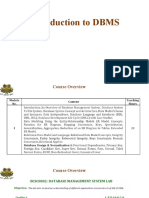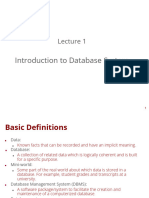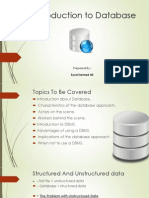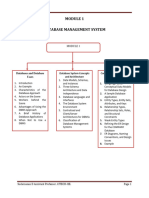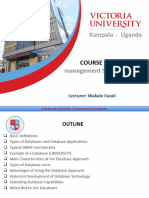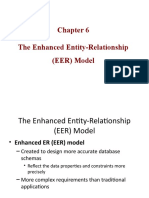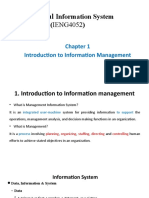0% found this document useful (0 votes)
93 views18 pagesChapter 3. Introduction To Database System
A database is a large collection of related data that models real-world entities and relationships. It provides advantages over file systems like controlled redundancy, data integrity, sharing, and performance. A database management system (DBMS) manages databases and provides functionality like data storage, retrieval, security, and concurrency controls. It allows multiple users and views of the data.
Uploaded by
KiburCopyright
© © All Rights Reserved
We take content rights seriously. If you suspect this is your content, claim it here.
Available Formats
Download as PPTX, PDF, TXT or read online on Scribd
0% found this document useful (0 votes)
93 views18 pagesChapter 3. Introduction To Database System
A database is a large collection of related data that models real-world entities and relationships. It provides advantages over file systems like controlled redundancy, data integrity, sharing, and performance. A database management system (DBMS) manages databases and provides functionality like data storage, retrieval, security, and concurrency controls. It allows multiple users and views of the data.
Uploaded by
KiburCopyright
© © All Rights Reserved
We take content rights seriously. If you suspect this is your content, claim it here.
Available Formats
Download as PPTX, PDF, TXT or read online on Scribd
/ 18
